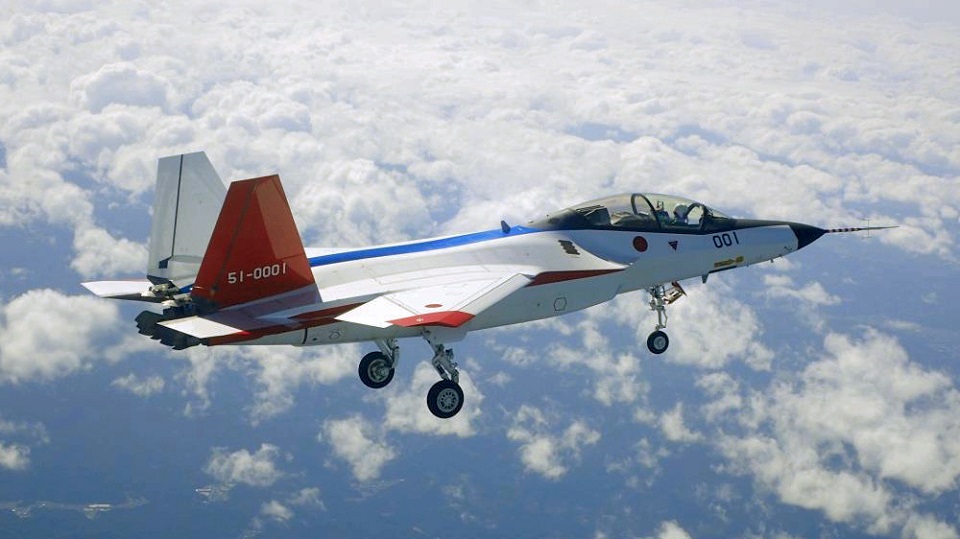Defence
Japan Greenlights Fighter Jet Sales to other nations

In a significant departure from its postwar pacifist stance, Japan’s Cabinet has given the green light to a plan aimed at selling future next-generation fighter jets developed in collaboration with Britain and Italy to other countries.
This decision marks a notable shift in Japan’s defense strategy, emphasizing its willingness to engage in international arms sales and bolster its role in global security. By allowing international sales of these advanced aircraft, Japan aims to enhance its technological edge in the face of escalating regional tensions, particularly from neighboring China and Russia.
Accompanying this decision is a revision to Japan’s arms equipment and technology transfer guidelines, permitting the sale of co-produced lethal weapons to countries beyond the project’s partners. However, Tokyo emphasizes that, for the time being, exports of such weaponry will be restricted solely to the new fighter jets, slated for deployment by 2035.
Japan’s move towards arms exports, which was formerly restricted by its pacifist constitution, is a reflection of the increased urgency with which it must address threats to regional and international security, especially those posed by China. The proposed fighter jet is expected to give Japan the cutting-edge capabilities it needs to manage the rising tensions in the area and put it in a competitive position in relation to adversaries like China and Russia.
The collaborative effort with Italy and Britain aims to develop an advanced fighter aircraft, slated to replace Japan’s aging fleet of F-2 fighters and the Eurofighter Typhoons utilized by its allies. However, this strategic move isn’t devoid of historical context. Japan’s wartime past as an aggressor, coupled with the devastation of World War II, has long shaped its constitutional limitations on military activities and arms exports.
The Japanese government has pledged to restrict the export of deadly weapons produced in collaboration with other parties, limiting sales to recently built fighter jets, in an effort to calm fears arising from its military past. Moreover, promises have been given that these weapons will not be deployed in active conflict zones.

Aviation
Boeing, Antonov to Collaborate on Defense Projects

– MOU represents Boeing’s commitment to work with Ukrainian industry
– Includes exploring opportunities for collaborating on in-country support of Unmanned Aerial Systems
A Memorandum of Understanding was signed today by Boeing and Antonov Company to investigate potential collaboration on defense-related projects.
“We’re happy to keep collaborating with the Antonov Company to help Ukraine’s economic development and expansion,” stated Ted Colbert, CEO and president of Boeing Defence, Space, & Security.
Airbus and the Antonov An-225: The Best Partnership:Click here
“This agreement demonstrates our ongoing efforts to find more opportunities to work with Ukrainian industry, which was underscored by our signing of the Ukrainian Defence Industry Compact earlier this year.”
The areas of potential collaboration identified in the agreement consist of training, logistical support and overhaul services for tactical Unmanned Aerial Systems utilized by the Ukrainian Armed Forces, which includes the ScanEagle. In addition, the companies will also explore opportunities for Antonov to provide engineering support to Boeing.
The six largest cargo aircraft ever built in the aviation industry:Click here
“A strong, innovative, and efficient defense industry is key to sustainable economic development and national security, and we are extremely excited to collaborate with Boeing,” said Ievhen Gavrylov, CEO of Antonov Company.
This agreement brings a whole new level of opportunity to implement the latest and most effective solutions – in addition to the possibility of future projects with Boeing in the aerospace and defense industry.”
-

 Travel1 week ago
Travel1 week agoAir India to Expand US Operations with Three New Routes After a Decade
-

 Travel2 weeks ago
Travel2 weeks agoWhy We Should Avoid These Stamps in a Passport
-

 Airlines1 month ago
Airlines1 month agoInvestigations Reveal Fake Chinese Titanium in Boeing and Airbus Jets
-

 Tech4 weeks ago
Tech4 weeks agoChina’s CATL Plans 1,800-Mile Electric Plane Launch by 2027
-

 Airport3 days ago
Airport3 days agoTop 10 Largest Airports in the World by Size
-

 Aerospace4 weeks ago
Aerospace4 weeks agoChina’s Fighter Jets Turn Wings into Autonomous Drones
-

 Airlines4 days ago
Airlines4 days agoAir India Rolls Out A350s for Delhi-New York JFK and Newark Routes
-

 Defence3 weeks ago
Defence3 weeks agoBoeing Enhances Chinook with New Engines and Block II Upgrades at $96 Million







